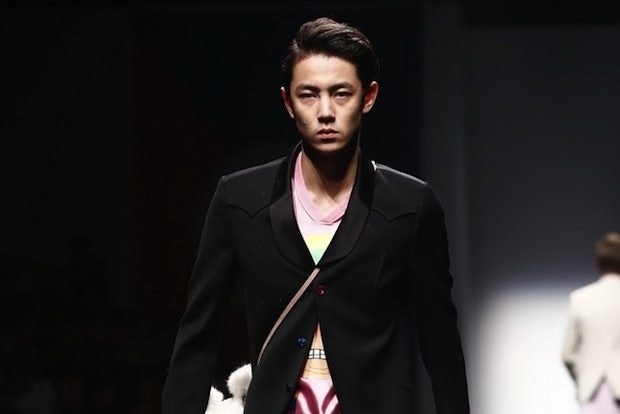
A look from Sankuanz’s F/W 2014 collection at Shanghai Fashion Week.
At the F/W 2014 Shanghai Fashion Week in April, a pollution mask printed with black and white geometric patterns was given to audience members after the runway show for menswear brand Blackgateone. The disturbing little gift imagined by Blackgateone’s artistic director Hadas Zucker reminded Shanghainese fashion lovers of this cold fact: fashion aims to capture l’air du temps—but what happens when that air becomes unbreathable? As a response to this year’s Chinese “airpocalyse,” Blackgateone’s collection provided a palette of multifunctional pieces to equip urban nomads and enable them to survive in the city or escape it quickly.
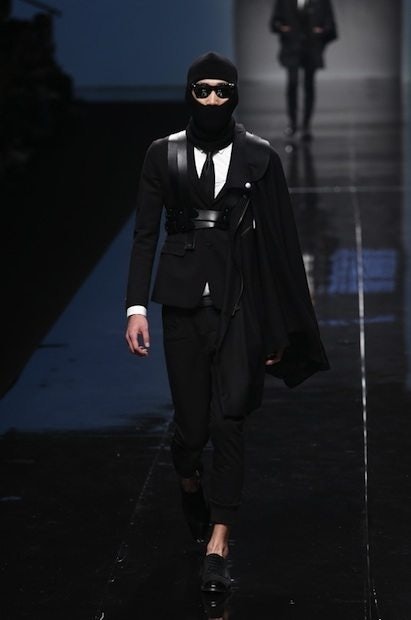
A look from Blackgateone's F/W 2014 collection at Shanghai Fashion Week.
The masks were just one example of the many ways in which escapism from polluted cities and the appeal of the unspoiled landscapes of ancient China inspired most of the menswear designers presenting their collections in Shanghai this season.
The collection of Y-Vision Homme, designed by Ye Weicheng (叶伟城), presented rejuvenated versions of the traditional draped coats and sleeveless tunics of Asian cavaliers.
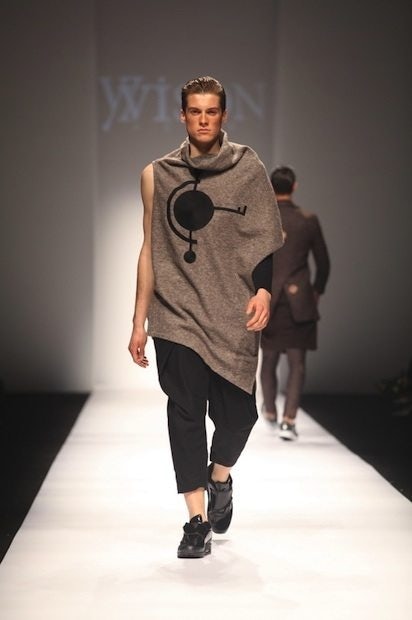
A look from Y-Vision Homme's F/W 2014 collection at Shanghai Fashion Week.
Meanwhile, Li Dengting, who studied art before founding the brand Wander, showed fashion silhouettes that evoked traditional peddlers and monks wandering in the vast landscapes of Chinese traditional paintings.
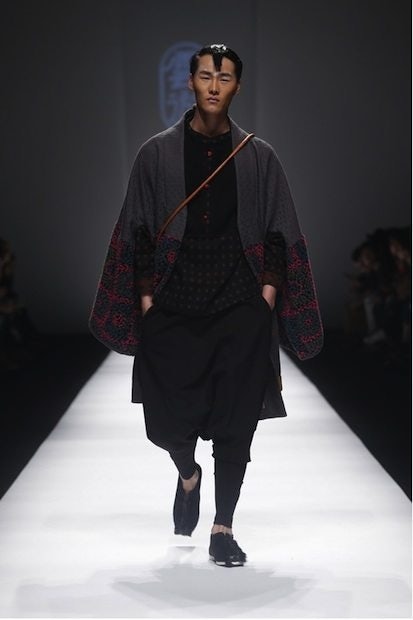
A look from Wander's F/W 2014 collection at Shanghai Fashion Week.
These three brands are characteristic of a new generation of Chinese fashion designers who are finding inspiration in Chinese heritage and branding to bring the concept of updated tradition to the Chinese upper-middle class. This newfound pride in “Chinese-ness” is a reversal from years past. For many years, a fashion brand “designed in China” was not valued by Chinese consumers, and most local menswear premium brands mimicked French, Italian, Spanish, American, Japanese, or Korean fashion labels.
The foreign influence was still perceptible in many shows, however. Sankuanz’s catwalk designed by Shang Guanzhe (上官喆) mixed colorful manga prints with unstructured blazers and high-tech sneakers in a combination directly inspired by Tokyo’s street style.
The collection of Tony Wear and Tony Jeans showed the long-lasting preference of Chinese men for Westernized formal looks and casual outfits. Zegna, Boss, and Armani are still the time-honored brands of masculine elegance in China, trailed by a large suite of local followers.
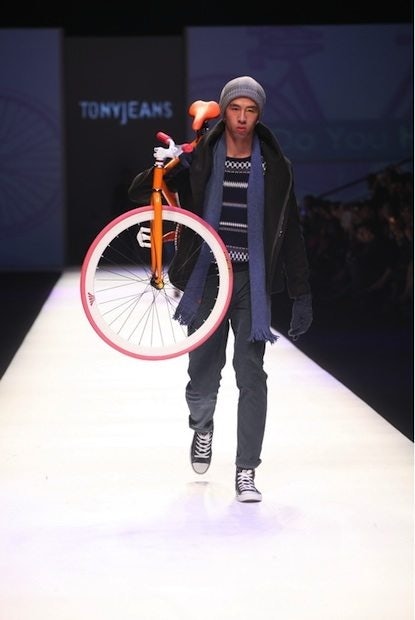
A look from Tony Jeans' F/W 2014 collection at Shanghai Fashion Week.
Zhang Tong (张童), head of design for Tony Wear, accessorized classic silhouettes with colorful bicycles, an accessory that reflects Chinese consumers’ growing desire for a healthier lifestyle.
With 800 menswear brands in China made up of around 600 Chinese domestic brands and 200 foreign brands, the Chinese fashion landscape is becoming increasingly competitive. Chinese designers are becoming conscious that an upgrade of their designs is becoming mandatory to seduce male consumers.
Shanghai Fashion Week showed that trendy Chinese brands are no longer always looking toward the West for inspiration. Chinese elements are infusing color ranges, body shapes, and patterns in a more subtle manner. In another sign of their growing maturity, young Chinese designers are increasingly using fashion as a form of creative expression, proclaiming the concerns of their generation—such as air pollution—and transforming them into sources of inspiration.
Geneviève Flaven is CEO of Style-Vision Asia, a trend agency based in Shanghai.